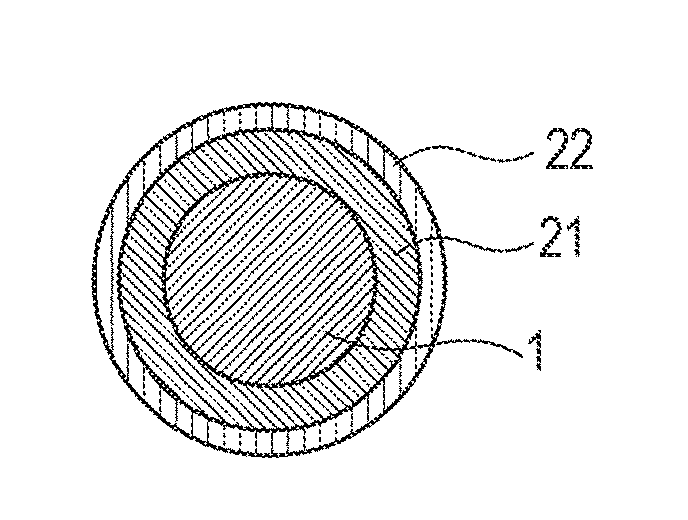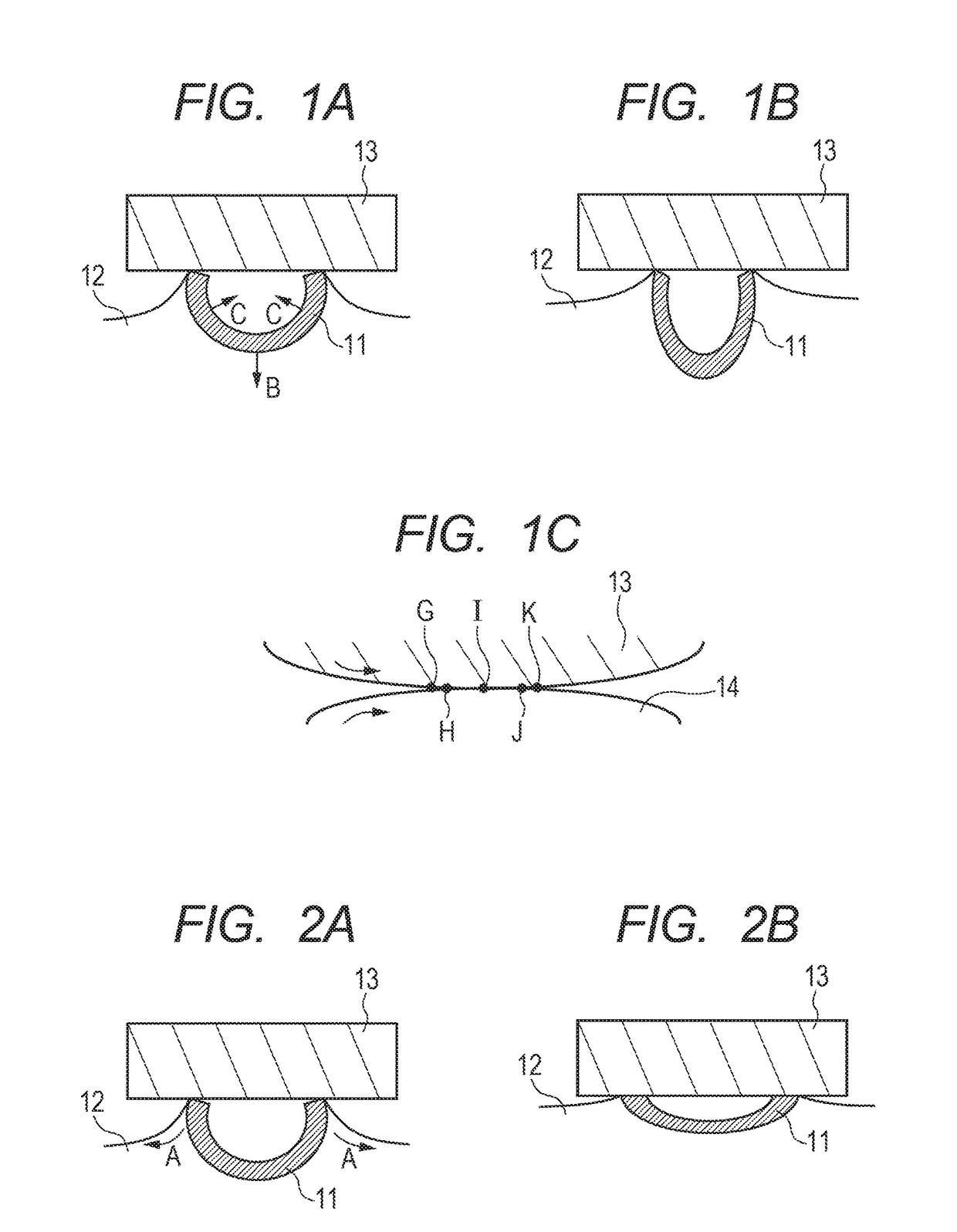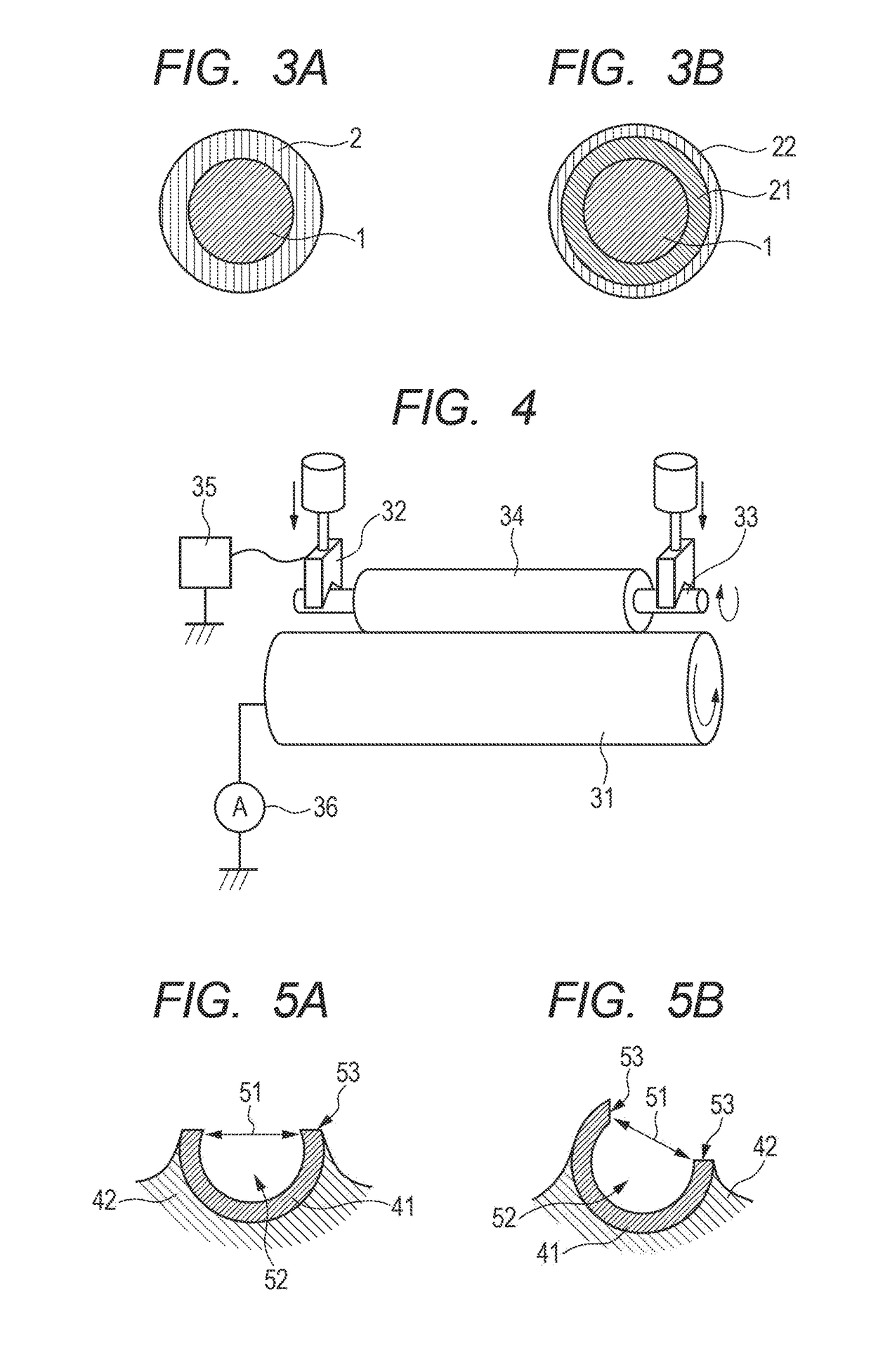Charging member, process cartridge and electrophotographic apparatus
- Summary
- Abstract
- Description
- Claims
- Application Information
AI Technical Summary
Benefits of technology
Problems solved by technology
Method used
Image
Examples
production example 1
Particle No. 1
[0111]An aqueous mixed solution was prepared containing 4000 parts by mass of ion-exchanged water, 9 parts by mass of colloidal silica as a dispersion stabilizer and 0.15 parts by mass of polyvinylpyrrolidone. Then, an oily mixed solution was prepared containing 50 parts by mass of acrylonitrile, 45 parts by mass of methacrylonitrile and 5 parts by mass of methyl acrylate as polymerizable monomers, and 12.5 parts by mass of n-hexane as an included substance, and 0.75 parts by mass of dicumyl peroxide as a polymerization initiator. This oily mixed solution was added to the aqueous mixed solution and 0.4 parts by mass of sodium hydroxide was further added thereto to prepare a dispersion.
[0112]The obtained dispersion was stirred to mix together with a homogenizer for 3 minutes, charged into a polymerization reactor which had been purged with nitrogen, and reacted at 60° C. for 20 hours while stirring at 400 rpm to prepare a reaction product. The obtained reaction product ...
production example 2
Particle No. 2
[0113]A resin particle No. 2 was produced with the same method as in Production Example 1 except that classifying conditions were changed. The physical properties of the resin particle No. 2 are shown in Table 1.
Production Examples 3 to 8: Production of Resin Particle's Nos. 3 to 8
[0114]Resin particles were produced with the same method as in Production Example 1 except that one or more of the amount of colloidal silica used, the type and amount of a polymerizable monomer used, and the rotational frequency for stirring in polymerization Were changed, and classified to obtain resin particles Nos. 3 to 8, respectively. The physical properties of the respective resin particles are shown in Table 1.
TABLE 1Amount ofRotationalResinResincolloidal silicaPolymerizable monomerfrequencyparticleProductionparticleused [parts byand amount thereof usedfor stirringdiameterExampleNomass][parts by mass][rpm][μm]119Acrylonitrile 50-40030methacrylonitrile 45-methyl acrylate 5229Acrylonitr...
production example 11
or Measuring Gas Permeability No. 1
[0117]The sheet in this Production Example is a sheet for measuring the gas permeability of a resin material obtained by removing an included substance from a resin particle. The resin particle 1 was heated and decompressed at 100° C. for removing the included substance to obtain a resin composition. Thereafter, a metal mold (φ 70 mm, 500 μm in depth) heated to 160° C. was filled with the resin composition, and pressurized at a pressure of 10 MPa to obtain a circular sheet for measuring gas permeability 1 having a diameter of 70 mm and a thickness of 500 μm.
Production Examples 12 to 16: Production of Sheets for Measuring Gas Permeability Nos. 2 to 6
[0118]Sheets for measuring gas permeability Nos. 2 to 6 were obtained with the same method as in the above using the resin particles Nos. 4 to 8, respectively, in place of the resin particle No. 1.
[0119]Using each of the sheets for measuring gas permeability No. 1 to 6, the oxygen gas permeability was me...
PUM
 Login to View More
Login to View More Abstract
Description
Claims
Application Information
 Login to View More
Login to View More - R&D
- Intellectual Property
- Life Sciences
- Materials
- Tech Scout
- Unparalleled Data Quality
- Higher Quality Content
- 60% Fewer Hallucinations
Browse by: Latest US Patents, China's latest patents, Technical Efficacy Thesaurus, Application Domain, Technology Topic, Popular Technical Reports.
© 2025 PatSnap. All rights reserved.Legal|Privacy policy|Modern Slavery Act Transparency Statement|Sitemap|About US| Contact US: help@patsnap.com



